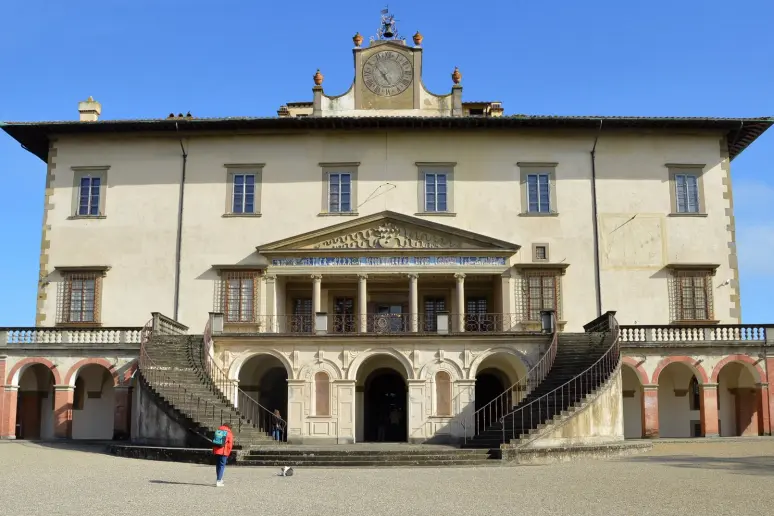
Your request has been sent successfully. We have sent you a confirmation email.
Login
Register
The Medici Villa of Poggio, a UNESCO heritage site


Immersed in the greenery of Poggio, not far from the river Ombrone, stands the imposing Villa Medicea. Known by many as "Ambra", the building is today considered the first example of a stately villa built in the countryside.
A unique place where you can still breathe the royal atmosphere left by the important historical figures who passed through its walls. A villa with an unaltered appearance that seems not to have suffered the effects of time and that tells a story full of significant events.
Today the Medici Villa of Poggio a Caiano houses two museum complexes.
On the ground floor and on the first floor are the historical apartments.
On the second floor, it is possible to visit the Museum of Still Life, which contains a collection of works coming directly from the Medici collection.
The history of the villa
As the name suggests, Villa Medicea was built at the behest of a member of the Medici family. It was Lorenzo the Magnificent who commissioned Giuliano Sangallo to build the villa in 1480.
The goal was to build a summer residence where the family could escape the chaos of the city. For this reason, the architect was asked to design something new, a structure aimed as much as possible at harmony and sharing.
Thanks to the revolutionary vision of Lorenzo De Medici, we moved away from the previous idea of a villa-fortress (summer residences were fortified like real castles to defend themselves against enemies) and moved closer to the new idea of a stately villa, partly dedicated to art and culture.
Several innovations were introduced by Giuliano Sangallo, who for the first time created an external courtyard for the villa.
The interior was finely decorated thanks to the presence of frescoes painted by important artists of the time, such as the painter Filippino Lippi, who was entrusted with the decoration of the first floor.
Unfortunately, Lorenzo did not have the opportunity to see the final result of the works, since he died in 1492 before the villa was completed. Toward the end of the project, Giuliano passed the task directly to his son.
Generations of Medicis fought over the villa, then replaced by the Habsburg-Lorraine dynasty, who took possession of it around the seventeenth century.
From that moment on, Villa Medicea has seen a long series of owners who have brought it to us today to become part of the UNESCO heritage.
What to observe when visiting the villa
Inside the building, you can admire the imposing historical apartments, among which the apartment dedicated to Bianca Cappello stands out.
On the ground floor, you cannot miss the entrance hall and the billiard room built by Vittorio Emanuele II. Equally important is the court theater of Princess Marguerite Louise d'Orléans, who decided to have it built to make her stay in the villa more comfortable.
We must also mention the beautiful Museum of Still Life, the creation of which required years of research to identify the right works.
Finally, a visit to the gardens of Villa Medicea, as imposing as the building itself, is particularly interesting. The delicate alternation of tall trees and bushes accompanies the gaze and completes the experience of the villa with the right amount of magic.
Campsites in the area


HU Firenze Camping in Town

Camping San Giusto

Camping Village Panoramico Fiesole

Camping Belsito

Camping Toscana Village
TOPCAMPING s.r.l. - Via del Brennero 97 - 38121 TRENTO (TN) - P.IVA IT 02249520228
© 2025 All Rights Reserved.






